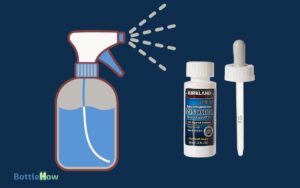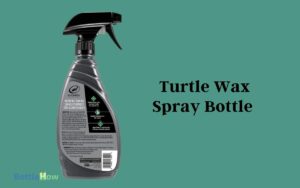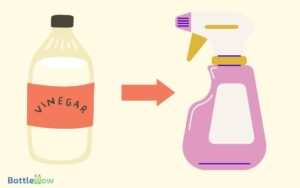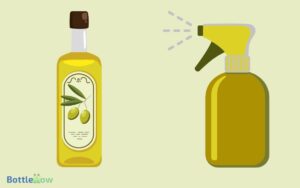Can You Put Hydrogen Peroxide in a Spray Bottle? Yes !
Yes, you can put hydrogen peroxide in a spray bottle, but you need to use the right type to maintain its effectiveness.
Choose a dark, opaque spray bottle to protect it from light, which helps maintain the potency of hydrogen peroxide. It’s also important to use a 3% concentration for general household cleaning to minimize the risk of skin irritation or damage to surfaces.
Always dilute it according to safety guidelines and wear gloves when handling. Label the bottle clearly with its contents and concentration to guarantee safe use. Discovering more about safe practices and uses can lead to excellent outcomes.
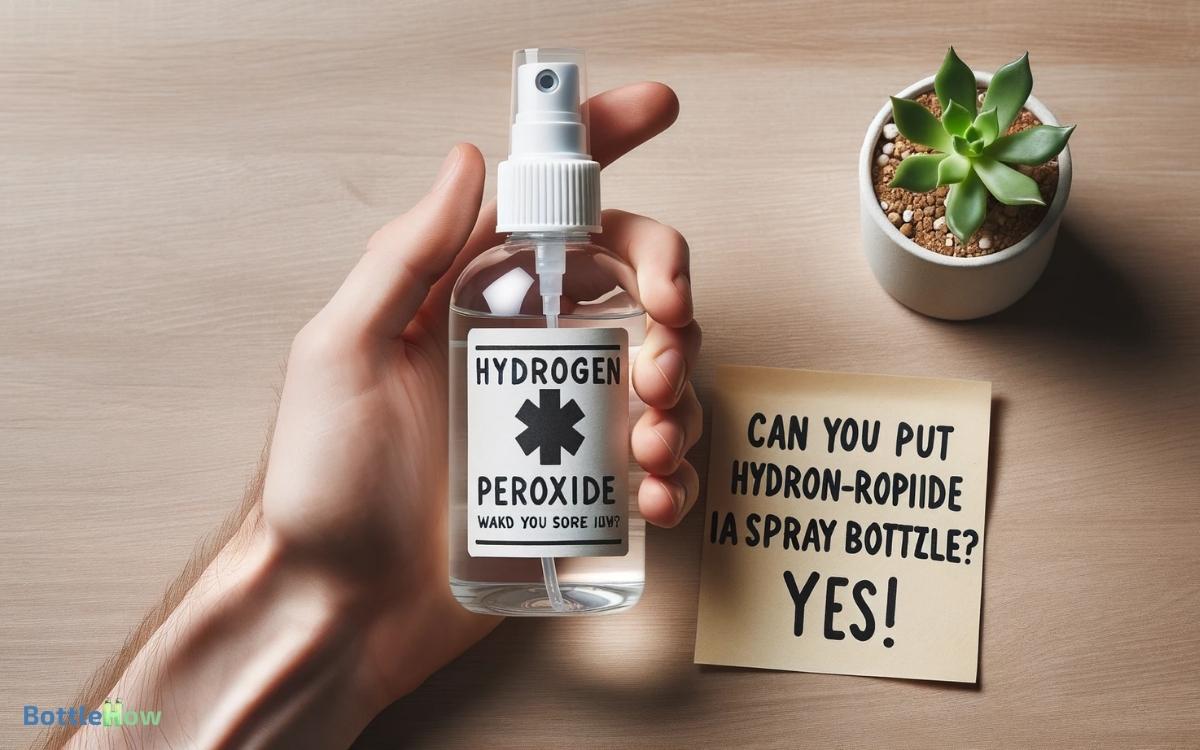
Key Takeaways
Understanding Hydrogen Peroxide
To guarantee the safe use of hydrogen peroxide, a common household disinfectant, it’s imperative to understand that it decomposes into water and oxygen when exposed to light. This requires storing it in opaque containers to maintain its effectiveness.
Handling it demands caution due to its reactive nature, as it can cause skin irritation or more severe injuries if used improperly.
Always dilute it according to guidelines before application to ensure safety and preserve its disinfectant properties.
It’s crucial to comprehend these characteristics in order to utilize it responsibly and promote the well-being of those you’re seeking to protect.
Benefits of Using Spray Bottles
When you use a spray bottle for hydrogen peroxide, you’ll notice that it promotes enhanced application precision.
This method guarantees you’re applying the solution exactly where it’s needed, avoiding waste and potential damage to surrounding areas.
Additionally, spray bottles offer convenient usage and efficient distribution, making them a practical choice for regular disinfection and cleaning tasks.
Enhanced Application Precision
Using a spray bottle for hydrogen peroxide application enhances precision, ensuring you target only the intended areas without wastage.
This significant control is vital, especially in sensitive environments such as food preparation areas or when disinfecting wounds.
By adjusting the nozzle, you can regulate the spray’s coverage, from a fine mist to a more direct stream, allowing for specific, localized application.
This method minimizes the risk of applying too much peroxide, which can be harmful to tissues and surfaces if used excessively. Additionally, it helps in conserving the solution, promoting efficient use of resources.
Always remember to check the bottle’s material compatibility with hydrogen peroxide to avoid any chemical reaction that might alter its effectiveness. Using the wrong type of container can lead to degradation or leakage, compromising both safety and efficacy. It is also important to store hydrogen peroxide in a cool, dark place to maintain its stability over time. Similarly, understanding the safe way to use bleach ensures proper handling and prevents hazardous reactions when disinfecting surfaces.
Convenient Usage Methods
One can greatly enhance the convenience of using hydrogen peroxide by opting for a spray bottle, which allows for quick and easy application in various settings.
You’ll find it particularly handy when you need to disinfect surfaces or sanitize items frequently, especially in high-contact areas.
The spray bottle guarantees that you can apply the solution directly where it’s needed most without unnecessary wastage.
It’s also ideal for maintaining hygiene in shared spaces, supporting your goal to serve and protect those around you effectively.
Efficient Product Distribution
Spray bottles enhance the even distribution of hydrogen peroxide, ensuring that each spray delivers just the right amount of solution to effectively disinfect surfaces without waste.
This method not only conserves your hydrogen peroxide, making it last longer, but it also helps you serve others by maintaining a clean and safe environment.
Here’s how using a spray bottle can transform simple cleaning tasks into more effective service:
| Benefit | Description |
|---|---|
| Targeted Application | Directs the solution precisely where needed, reducing runoff. |
| Minimal Contact | Limits direct handling of chemicals, enhancing safety. |
| Adjustable Nozzle | Allows for control over spray reach and intensity. |
| Economic Use | Reduces excess usage, saving resources. |
| Consistent Coverage | Achieves consistent application for effective disinfection. |
Choosing the Right Concentration
Selecting the appropriate concentration of hydrogen peroxide for your needs is essential, as using too strong a solution can be hazardous.
Typically, a 3% concentration is sufficient for general household cleaning and disinfecting, ensuring safety while effectively killing germs.
This lower concentration minimizes the risk of irritation to your skin or damage to surfaces, making it a safer choice for frequent use.
If you’re aiming to address more stubborn stains or need a potent antiseptic, concentrations up to 10% might be necessary.
However, you’ll need to handle these higher concentrations with extra care to avoid adverse reactions.
Always consider the task at hand and choose the lowest effective concentration to meet your needs while ensuring everyone’s safety.
Best Practices for Storage
When storing hydrogen peroxide, you need to take into account the type of container you use; it’s best to keep it in opaque, non-reactive materials to prevent decomposition.
Exposure to light can greatly degrade hydrogen peroxide, so you must store it in a dark place. Ensuring these conditions can maintain its effectiveness and safety for use.
Appropriate Container Materials
For optimal storage, you should select containers made of opaque, non-reactive materials like HDPE or glass when using hydrogen peroxide.
These materials guarantee the chemical remains stable and effective for your needs without degrading. It’s essential to avoid using containers that could react with hydrogen peroxide or allow its decomposition, which can lead to ineffective results or safety hazards.
Here’s a helpful table comparing suitable and unsuitable materials:
| Material Type | Suitability | Reason |
|---|---|---|
| HDPE | Suitable | Non-reactive, durable |
| Glass | Suitable | Non-reactive, blocks light |
| PVC | Unsuitable | Can react with peroxide |
| Metal | Unsuitable | Can catalyze decomposition |
| Polystyrene | Unsuitable | Permeable to oxygen |
Choosing the right container is vital to maintain the integrity and efficacy of hydrogen peroxide.
Light Exposure Effects
Exposing hydrogen peroxide to light accelerates its decomposition, so it’s crucial to store it in a dark place to maintain its effectiveness.
When you’re using a spray bottle for hydrogen peroxide, opt for one made of dark, opaque materials to shield the contents from light. If you only have a clear bottle, keep it tucked away in a cabinet or drawer where light can’t reach it.
Remember, hydrogen peroxide is sensitive not only to UV rays from natural sunlight but also to artificial lights. So, even indoor lighting can reduce its potency over time.
To make sure you’re always ready to serve and assist effectively with a potent solution, routinely check your storage practices and adjust as necessary.
Tips for Safe Use
Always store hydrogen peroxide in its original dark container to prevent degradation from light exposure.
When you’re ready to use it, carefully pour the amount you need into a spray bottle, especially if you’re assisting others with cleaning or disinfecting tasks.
Make sure you’re wearing gloves to protect your skin from irritation and possible damage. It’s essential to keep the bottle out of reach of children and pets, as ingestion or improper contact can be harmful.
Always label the spray bottle clearly, noting its contents and concentration. This precaution prevents accidents and guarantees safety for everyone using it.
Never mix hydrogen peroxide with other household cleaners to avoid dangerous chemical reactions. Finally, dispose of any unused solution thoughtfully to minimize environmental impact.
Common Uses in the Home
Hydrogen peroxide serves as a versatile disinfectant in homes, effectively cleaning surfaces and brightening laundry.
You can use it to sanitize your kitchen counters and cutting boards, ensuring they’re free from harmful bacteria.
It’s also great for cleaning glass and mirrors, leaving them streak-free without harsh chemicals. Additionally, adding a cup of hydrogen peroxide to your white laundry can help remove stains and whiten fabrics without the use of bleach.
It’s even useful in your bathroom, where you can spray it on tile grout to combat mold and mildew.
When using hydrogen peroxide, you’re not only keeping your home clean but also promoting a healthier environment by reducing the reliance on more toxic cleaners.
Potential Risks and Precautions
While hydrogen peroxide is a useful household cleaner, you must handle it carefully to avoid skin irritation and other potential hazards.
If it comes into contact with your skin, it can cause redness, stinging, or even blisters. You should always wear gloves when using it, especially if you have sensitive skin.
Also, make sure the area you’re cleaning is well-ventilated, as the fumes can irritate your eyes and respiratory system.
Don’t mix hydrogen peroxide with vinegar or other acids, as this combination can create harmful vapors.
It’s important to store hydrogen peroxide in its original container in a cool, dark place to prevent decomposition, and always keep it out of reach of children and pets.
Conclusion
In wrapping up, remember that using hydrogen peroxide in a spray bottle can be incredibly effective and convenient. However, it’s essential to handle it carefully.
Surprisingly, a study found that diluted hydrogen peroxide can kill up to 99.9% of germs on surfaces, making it a powerful ally in your cleaning arsenal.
Always choose the right concentration and store it in a cool, dark place. With these precautions, you’ll maximize safety while keeping your home sparkling clean.


